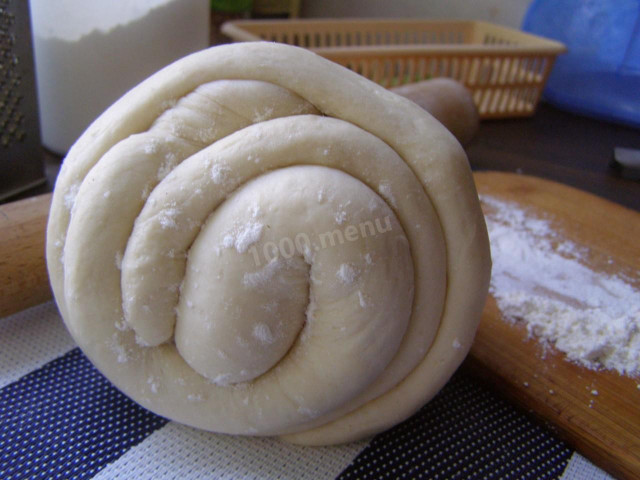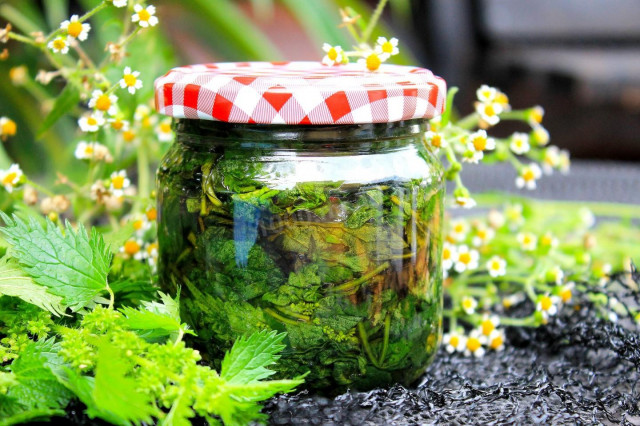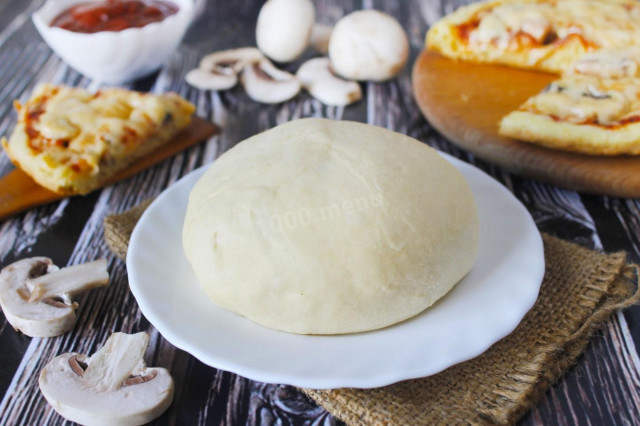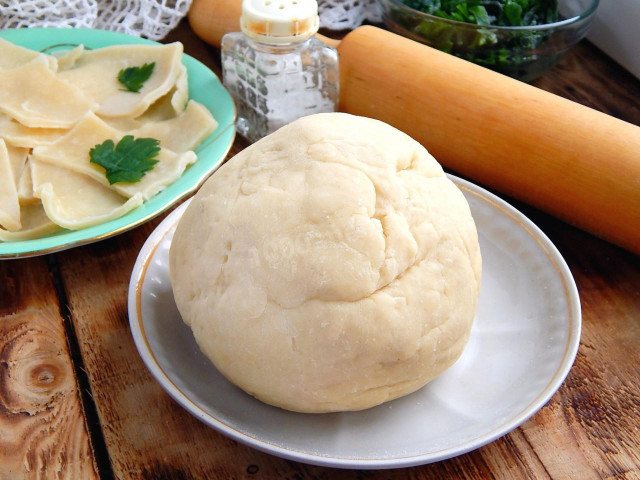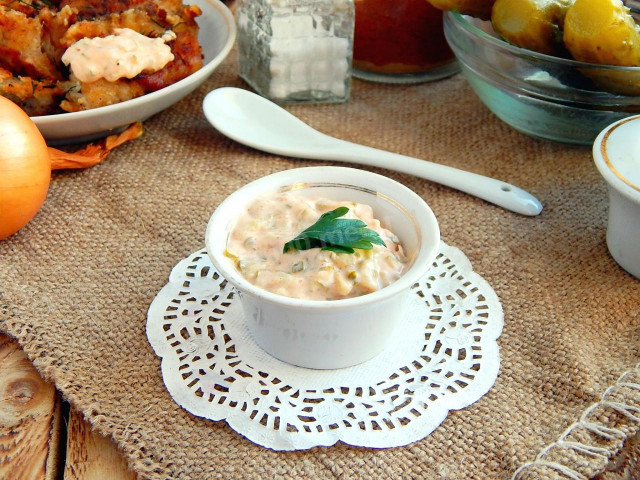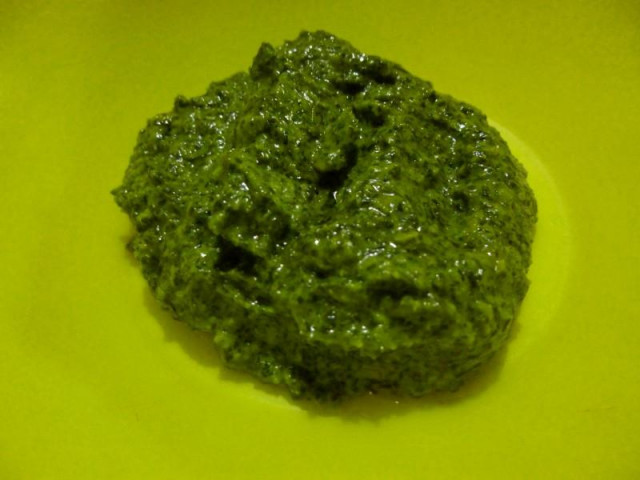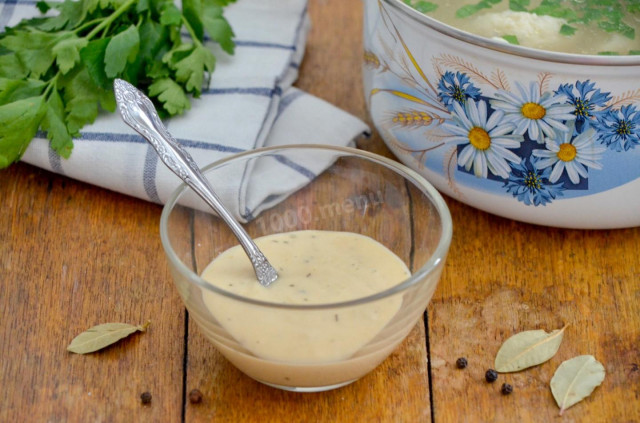Composition / ingredients
Step-by-step cooking
Step 1:
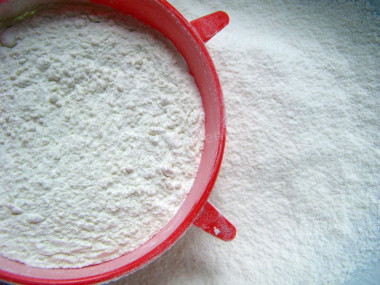
Since the quality of the dough depends on the flour, we will prepare this important component. We will definitely sift it, you can even do it a couple of times (you can directly into the bowl).
Step 2:
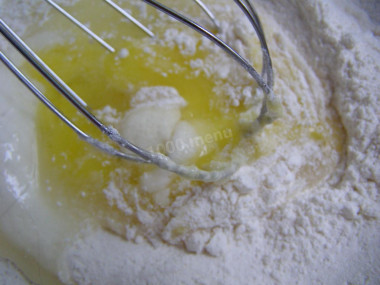
Let's collect all the dry components in one vessel. Mix them well. Let's beat eggs into this mixture. Whisk or mix in a combine.
Step 3:
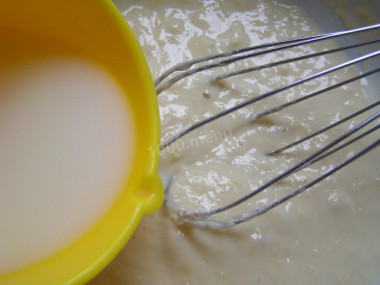
Gradually pour the milk in here and knead the dough.
Step 4:
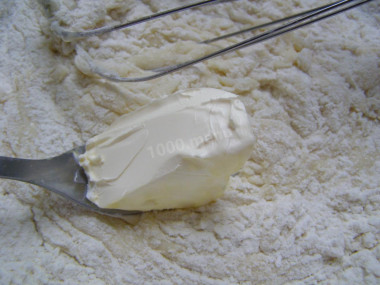
Put 60 g of softened butter. We continue kneading.
Step 5:
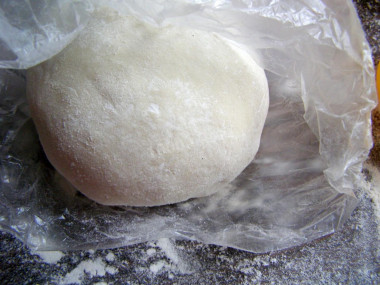
Having rolled up the bun on the cutting board, wrap it with polyethylene. The dough will rise in a couple of hours.
Step 6:
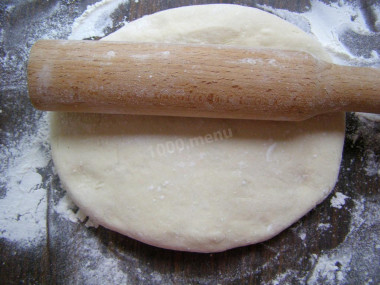
Then roll out the bun, giving the layer a rectangular shape.
Step 7:
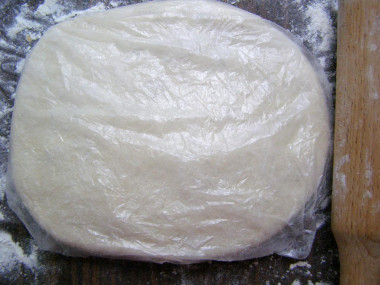
Wrapping it in a cellophane bag, forget about the test for 5 hours – let it stand in the refrigerator.
Step 8:
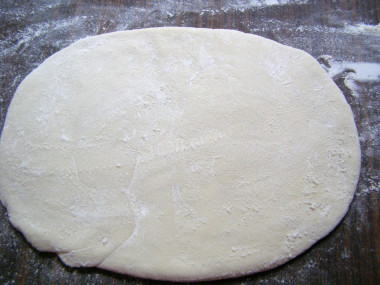
After a while, roll out the dough a centimeter thick.
Step 9:
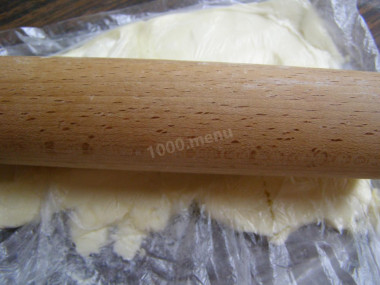
Break the butter (500 g) with a rolling pin, cooling it beforehand. Roll it out directly in polyethylene, giving it a rectangular shape (only 2 times less than the dough).
Step 10:
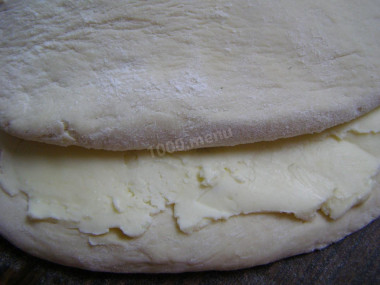
Putting the butter on half of the rolled dough, cover it with the second part.
Step 11:
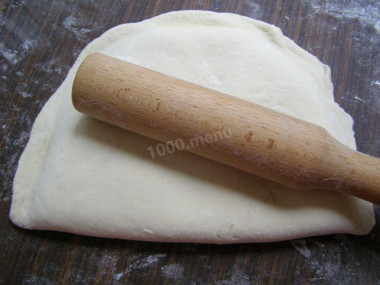
Pin the edges with a rolling pin or fingers.
Step 12:
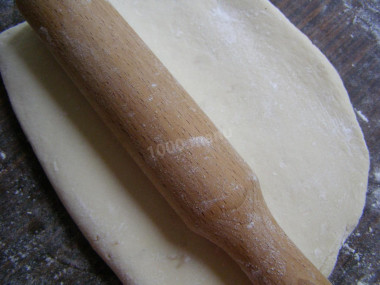
Quickly roll out the layer so that it becomes 1-1.5 cm thick.
Step 13:
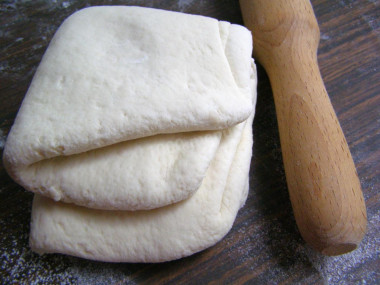
Remove the excess flour with a brush and, folding the dough into four, send it for 20 minutes. in the refrigerator, do not forget to wrap it in a plastic bag. So – rolling out and folding three times, do it a couple of times, not forgetting to cool. The dough will turn out great!
And more tips
Take the best grades of flour and always sift it.
Be sure to try to adhere to the recipe and cooking technology.
Do you want to add water instead of milk to the dough? There is an opinion that the dough will turn out tastier, more elastic. Take the water so that it is warm.
The best temperature in the room and products with dishes is up to 17 degrees.
When rolling out, let the dough rest so that the layers do not break later, and put it in the refrigerator.
If you need a lot of dough, but you won't cook right away, freeze the leftovers.
The amount of sugar can be reduced if you use the dough for unsweetened baking (2 tbsp.l. is enough for 500 g of flour).
Fat should not be added in melted or frozen form – soften it slightly.
Do not forget about comfort – you should not rush anywhere, but give yourself only to this process!
Caloric content of the products possible in the composition of the dish
- Whole cow's milk - 68 kcal/100g
- Milk 3.5% fat content - 64 kcal/100g
- Milk 3.2% fat content - 60 kcal/100g
- Milk 1.5% fat content - 47 kcal/100g
- Concentrated milk 7.5% fat content - 140 kcal/100g
- Milk 2.5% fat content - 54 kcal/100g
- Granulated sugar - 398 kcal/100g
- Sugar - 398 kcal/100g
- Butter 82% - 734 kcal/100g
- Amateur unsalted butter - 709 kcal/100g
- Unsalted peasant butter - 661 kcal/100g
- Peasant salted butter - 652 kcal/100g
- Melted butter - 869 kcal/100g
- Salt - 0 kcal/100g
- Wheat flour - 325 kcal/100g
- Chicken egg - 80 kcal/100g
- Dry yeast - 410 kcal/100g

